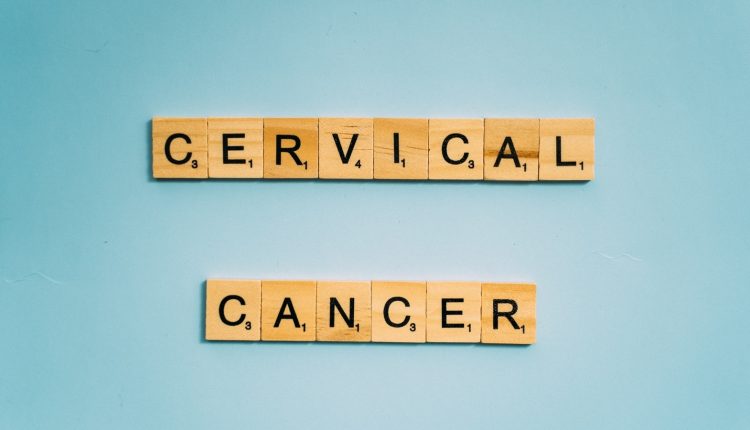Cervical cancer is one of the most common cancers that affect women and this condition also impacts a woman’s fertility and makes it difficult for her to conceive naturally but though infertility after cervical cancer is inevitable, the advent of medical technology such as cancer fertility preservation has now made it possible for women to embrace motherhood while combating diseases like cervical cancer. Cervical cancer begins in the cervix of a woman which is the lower, narrow end of the uterus and certain strains of the human papillomavirus (HPV), a sexually transmitted infection is the reason behind the occurrence of this disease.
In an interview with HT Lifestyle, Dr (Prof) Vinita Das, Advisor and Consultant at Birla Fertility and IVF, revealed, “The common symptoms include vaginal discharge, bleeding after intercourse or even between periods, and pelvic pain. Cervical cancer requires extensive treatment in the advanced stages which can impact fertility negatively. Some methods of treatment of cervical cancer can reduce your chances of getting pregnant. If the disease is not diagnosed early chances are that a radial hysterectomy will be done, leading to the removal of the uterus or womb. In this case, the patient will not be able to carry a child in the future. This is also true if the ovaries are removed, as the patient will not be able to produce any eggs.”
She highlighted, “HPV cells can live in more areas of the body than the genitals. They are sometimes present in the anus, mouth, and throat. Skin-to-skin contact, such as during oral sex, can transmit the virus. Additionally, if your treatment involves radiation therapy, your ovaries will be exposed to high-energy rays, which can damage them. This will lead to infertility as some eggs will be destroyed, causing early menopause. Also, women who go through radiation therapy face high chances of miscarriage or premature births as the uterus is exposed to radiation.” She suggested –
1. Egg Freezing: The procedure is also known as Oocyte Cryopreservation. The women’s eggs are harvested after doing an IVF process wherein the ovaries are stimulated with drugs called gonadotropins and an ovum pick-up procedure is carried out. The oocytes or eggs thus obtained are thereafter frozen in this procedure. It is stored to preserve reproductive potential in women of reproductive age
2. Embryo Freezing: It involves an IVF cycle where the harvested eggs from the female partner are fertilised with the sperms from the male partner, and the thus-formed embryos are then cryopreserved
3. Ovarian Cortex Freezing: Ovarian cortex freezing is an experimental and promising form of fertility preservation that involves cryopreservation of the cortex part of the ovaries, which contain the eggs. It has been increasingly used for fertility preservation in younger cancer patients when egg or embryo freezing is not a viable option
Echoing the same, Kanusha YK, Psychotherapist and Relationship expert at Allo Health, shared, “Human papillomavirus is the most common sexually transmitted virus that causes cervical cancer. Although it is unusual, cervical cancer can still occur in someone who has never engaged in a sexual activity. More body parts than just the genitalia can support HPV cells. They start appearing in the anus, mouth, and throat. The virus can be spread by skin-to-skin contact, such as during oral sex. There are other methods besides penetrating sex to transmit it. The HPV virus has the ability to resist being destroyed by disinfectants containing alcohol, heat and drying agents.”
She pointed out, “Commonly found on hospital-use medical equipment, upholstery, and textiles like towels, it can linger in the environment for several days and become an occasional infection-causing agent. Infection at tattoo sites is another way HPV can cause infections; they usually show up as warts. With cervical cancer development, however, individuals that are not sexually active may develop cervical cancer due to mutations that can occur in particular genes. Furthermore, smokers have twice the risk of developing cervical cancer as non-smokers, and those who use oral contraceptives have a higher risk. Most HPV infected individuals do not exhibit any symptoms. They are unaware that they are infected. Many of them have the infection on their fingers, which can transmit to other people. Your doctor can go over your particular risk factors and decide on the most appropriate testing strategy for you.”
Talking about whether one can still get cervical cancer if they don’t engage in sexual activity, Dr Manjusha Goel, Dept of Obs and Gynae at the CK Birla Hospital (R) in Delhi, said, “Anyone having a cervix can have cervical cancer. The cervix is the lower part of the uterus which connects the uterus to the vagina. Human Papilloma Virus (HPV) is the commonest cause of cervical cancer. Penetration alone doesn’t cause this cancer as this can also spread through skin-to-skin transmission and skin to the mucosa.”
She added, “Besides this, the other causes of cervical cancer include smoking, family history, compromised immune response, HIV, and long use of oral contraceptive pills. Humans can develop cervical cancer even if they never had sex, but such possibilities are very low. The other possibility could be oral sex, genital touching, etc that could lead to transmission of the HPV virus beyond sexual activity. Cervical cancer generally starts with abnormal changes in the cells lining the cervix which can be easily detected by a Pap smear test. The other method of preventing cervical cancer includes vaccination against the HPV virus. People who have never engaged in any sexual activity must undergo timely cervical cancer screening and get vaccinated against the same.”


